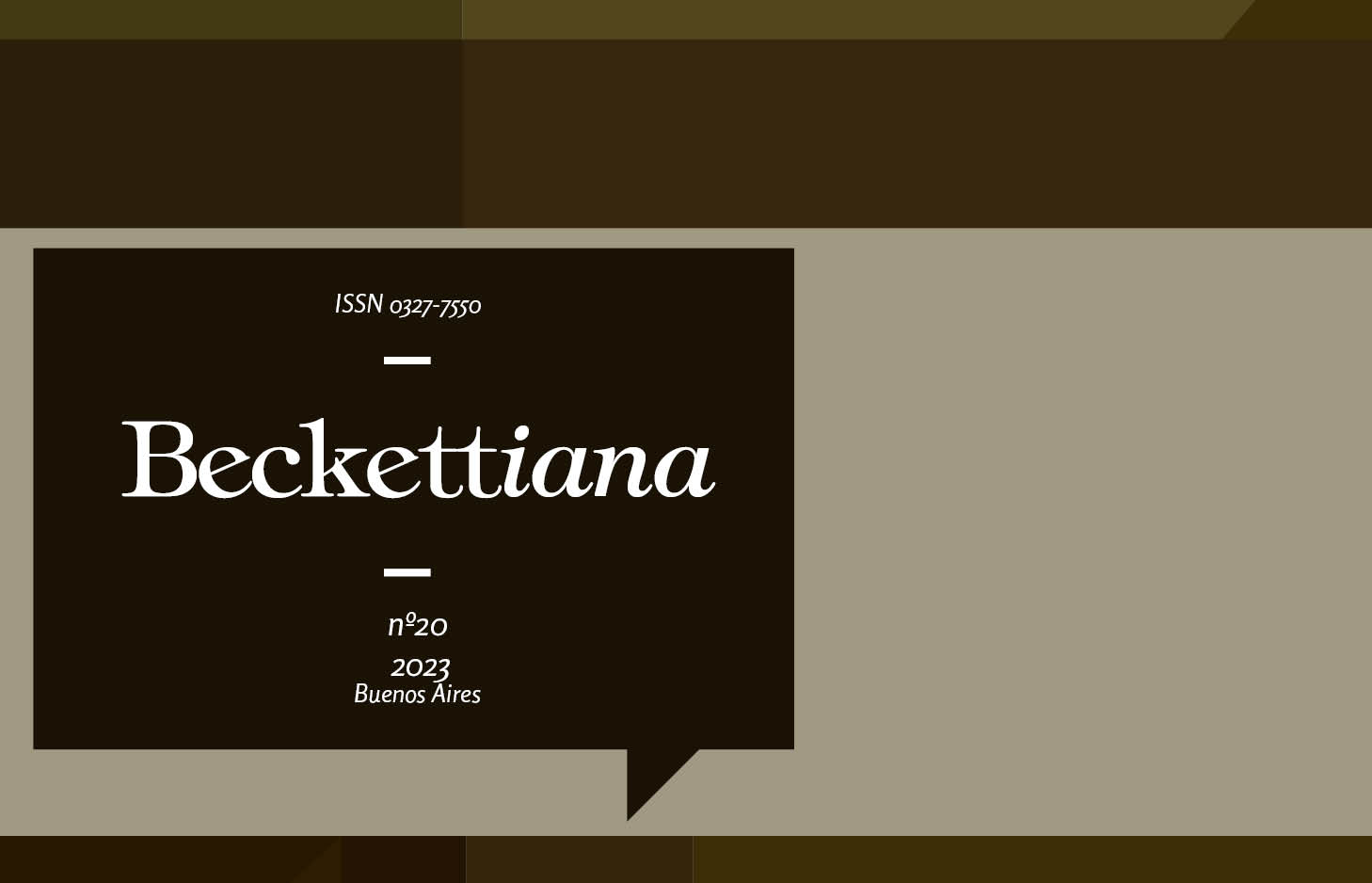El cubo y el azul
Ecos y huecos de poesía en Sans/Lessnes
Keywords:
Beckett; Poetry; Têtes-mortes/Residua; Time; Theatricality; Comparative Literature.
Abstract
The text explores two modes of presence of poetry in Assez (1966), Imagination morte imaginez (1965) and Sans (1969), included in the compilation Têtes-mortes (1967/1972). On one hand, we will point out some echoes of Poetry, understood as literary and human heritage, said and “unsaid” by the Beckettian text. On the other, we will unfold this commentary in view of its relations with certain echoes of poetry, understood as a discursive mode. Hence an attention to three aspects of poetry in Têtes-mortes: in the form of references, direct and indirect, to authors and problems associated with the poetic tradition; through modes of elaboration and overdetermination of rhythmic, sound and visual dimensions, which suggest the exploration of a region of tension between prose and poetry; and with regard to the problematic of the symbol and the relationship between language and life. On these three levels, poetry will be approached as an instance of staging the relations between time and oblivion, elaborated in the key of a performative paradox that unfolds in different directions. The aim is to associate the poetic in Têtes-mortes to a dynamic in which the enunciation of the loss of objects is overdetermined by the overtones of an enunciation that makes them intermittently present. Ultimately, through the intersection between the posthumous temporality of “remains” and “hollows”, poetry would burst into echoes that overdetermine its own denial. So this aspect will foreground the strategic role of beginnings and endings in the works discussed.Downloads
Download data is not yet available.
References
.
Published
2023-12-27
How to Cite
Goldfeder , A. (2023). El cubo y el azul. Beckettiana, (20). https://doi.org/10.34096/beckettiana.n20.13864
Issue
Section
Artículos del VII Congreso de la Samuel Beckett Society – Buenos Aires 2022
Copyright (c) 2023 Beckettiana

This work is licensed under a Creative Commons Attribution-ShareAlike 4.0 International License.








